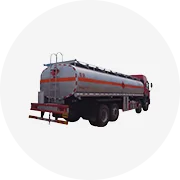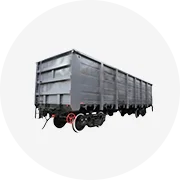Changan CS75 Models and Types
The Changan CS75 is a versatile sports utility vehicle (SUV) manufactured by Changan Automobile, featuring a front-engine, front-wheel-drive layout. This vehicle serves dual purposes, functioning effectively as both a personal family vehicle and a commercial option (taxi) in many markets.
Changan CS75 1.8T Manual Elite
Key Features: Manual transmission, high-performance engine
- Dimensions: 4652mm × 1812mm × 1751mm
- Wheelbase: 2700mm
- Curb Weight: 1750kg
- Turning Radius: 5.6m
- Trunk Volume: 649L (VDA)
- Fuel Consumption: 8.4L/100km
- Maximum Speed: 185-190 km/h
- Fuel Tank Capacity: 60L
Changan CS75 1.8T DCT Elite
Key Features: Dual-clutch transmission, improved fuel efficiency
- Dimensions: 4652mm × 1812mm × 1751mm
- Wheelbase: 2700mm
- Curb Weight: 1819kg
- Turning Radius: 5.6m
- Trunk Volume: 649L (VDA)
- Fuel Consumption: 7.7L/100km
- Maximum Speed: 175-180 km/h
- Fuel Tank Capacity: 58L
Expert Tip: The DCT Elite model offers better fuel efficiency with a 0.7L/100km advantage over the Manual Elite, making it more economical for daily commuting and long-distance travel.
| Feature | CS75 1.8T Manual Elite | CS75 1.8T DCT Elite |
|---|---|---|
| Transmission | Manual | 7-speed DCT Automatic |
| Curb Weight | 1750kg | 1819kg |
| Fuel Consumption | 8.4L/100km | 7.7L/100km |
| Maximum Speed | 185-190 km/h | 175-180 km/h |
| Fuel Tank Capacity | 60L | 58L |
| Suspension System | McPherson (Front), Multi-link (Rear) | McPherson (Front), Multi-link (Rear) |
Comprehensive Specifications of Changan CS75
The Changan CS75 combines performance, comfort, and safety in a versatile SUV package. Below are the detailed specifications that make this vehicle stand out in its segment:
Engine Performance
2.0L Turbo Engine
156 kW / 5500 RPM
320 Nm / 1750-4500 RPM
Transmission
7-speed DCT
Smooth Gear Shifts
Responsive Acceleration
Dimensions
Length: 4,510 mm
Width: 1,845 mm
Height: 1,715 mm
Capacity
Seating: 5 passengers
Trunk: 600 liters
Ground Clearance: 200 mm
Safety Features
| Safety System | Function | Benefit |
|---|---|---|
| Airbag System | Front, Side, and Curtain Protection | Comprehensive impact protection |
| Anti-lock Braking System (ABS) | Prevents wheel lock during braking | Maintains steering control during emergency stops |
| Electronic Stability Control (ESC) | Monitors and corrects vehicle stability | Prevents skidding and loss of control |
| Tire Pressure Monitoring System (TPMS) | Continuously monitors tire pressure | Alerts driver to unsafe tire conditions |
| Hill-start Assist Control (HAC) | Prevents rollback on hills | Easier and safer hill starts |
Interior and Entertainment Features
- Comfort: Multifunction leather steering wheel, cruise control, keyless entry system, automatic air conditioning
- Convenience: Rear parking sensors, automatic anti-glare rearview mirror, electric folding side mirrors
- Entertainment: 8-inch capacitive touch screen, AM/FM radio, USB port, Bluetooth connectivity
- Smartphone Integration: Apple CarPlay, Baidu Carlife compatibility
- Audio: 6-speaker sound system for premium audio quality
- Wheels: 225/55 R18 aluminum alloy wheels for style and performance
Buyer's Insight: The 2.0L turbo engine option provides the best balance of power and fuel efficiency for the CS75, making it suitable for both city driving and highway cruising.
Essential Maintenance Guide for Changan CS75
Proper maintenance is crucial for ensuring the longevity, performance, and safety of your Changan CS75. Follow this comprehensive maintenance schedule to keep your vehicle in optimal condition:
| Maintenance Task | Frequency | Importance | DIY Difficulty |
|---|---|---|---|
| Engine Oil Change | Every 5,000-7,500 km | Critical | Easy |
| Tire Pressure Check | Weekly | High | Very Easy |
| Brake Pad Inspection | Every 10,000 km | Critical | Moderate |
| Battery Check | Every 6 months | High | Easy |
| Air Filter Replacement | Every 20,000 km | Medium | Easy |
| Spark Plug Inspection | Every 20,000 km | Medium | Moderate |
| Wheel Alignment | Every 20,000 km | Medium | Professional |
| Timing Belt Check | At 60,000 km | Critical | Professional |
| Cooling System Check | Every 10,000 km | High | Moderate |
Maintenance Tip: Regularly checking and maintaining proper tire pressure not only ensures safety but can improve fuel efficiency by up to 3%. For the Changan CS75, the recommended tire pressure is typically 32-35 PSI, but always check your owner's manual for the exact specifications.
Long-Term Maintenance Considerations
- Fluid Checks: Regularly inspect brake fluid, transmission fluid, and power steering fluid levels
- Rust Prevention: Wash your CS75 regularly, especially after driving in coastal areas or on salted roads
- Suspension System: Have the suspension checked annually, especially if you frequently drive on rough roads
- Timing Belt/Chain: Replace according to manufacturer specifications (typically 60,000-100,000 km)
- Professional Diagnostics: Schedule comprehensive diagnostic checks annually to identify potential issues before they become serious problems
How to Choose the Right Changan CS75
Selecting the ideal Changan CS75 requires careful consideration of several key factors. Use this guide to make an informed decision that meets your specific needs and preferences:
Compliance and Safety
When purchasing a Changan CS75 or accessories, always verify that all components meet relevant safety and regulatory standards for your region. This is particularly critical for safety systems like brakes, airbags, and tires.
Key Consideration: Check for safety certifications and crash test ratings
Compatibility and Fit
Ensure that any parts or accessories are specifically compatible with your CS75 model year and trim level. Small variations between model years can affect compatibility and proper function.
Key Consideration: Verify exact model specifications before purchasing
Quality and Reliability Factors
- OEM vs. Aftermarket: Original Equipment Manufacturer (OEM) parts are designed to exact specifications but cost more. Aftermarket parts offer cost savings but may vary in quality.
- Brand Reputation: Research the reputation of Changan in your market and review reliability statistics for the CS75.
- User Reviews: Read owner reviews focusing on long-term reliability and common issues with the specific model year you're considering.
- Service Network: Verify the availability of authorized service centers and parts in your area before purchase.
Shopping Tip: The Changan CS75 Plus model offers upgraded features and improved build quality compared to the standard CS75. If your budget allows, consider this option for enhanced technology, safety features, and overall refinement.
Price and Value Considerations
| Consideration | What to Look For | Why It Matters |
|---|---|---|
| Total Cost of Ownership | Fuel efficiency, maintenance costs, insurance rates | Provides a complete picture beyond purchase price |
| Warranty Coverage | Duration, components covered, transferability | Protects your investment and reduces risk |
| Resale Value | Depreciation rate, market demand | Affects long-term financial impact |
| Feature Package Value | Standard vs. optional equipment, trim level differences | Ensures you pay only for features you need |
DIY Replacement Guide for Changan CS75 Parts
Performing your own maintenance and repairs on your Changan CS75 can save money and provide a sense of accomplishment. Follow this step-by-step guide for successful DIY part replacement:
Prepare Your Workspace
Park your CS75 on level ground, engage the parking brake, and turn off the engine. Allow the engine to cool if you're working on components in the engine bay. Choose a well-lit area with enough space to move around the vehicle comfortably.
Gather Necessary Tools and Parts
Collect all required tools and replacement parts before starting your project. For most CS75 maintenance tasks, you'll need basic tools like screwdrivers, wrenches, pliers, and sockets. Using genuine Changan CS75 parts ensures proper fit and function.
Access the Engine Compartment
Pull the hood release lever inside the vehicle, then locate and release the secondary latch under the hood. Use the prop rod to secure the hood in the open position, providing safe access to the engine components.
Disconnect the Battery
For safety, disconnect the negative (black) terminal of the battery before working on any electrical components or sensitive systems. This prevents electrical shorts and potential damage to vehicle electronics.
Locate and Access the Component
Use your owner's manual or a repair guide to identify the exact location of the part you need to replace. Remove any covers, shields, or adjacent components that restrict access to your target part.
Remove the Old Part
Follow the specific procedure for your component, which may involve disconnecting electrical connectors, removing mounting bolts, or detaching hoses. Take photos or notes during disassembly to aid in reassembly, and keep track of all hardware.
Install the New Part
Compare the new part with the old one to ensure they match exactly. Position the new part in the mounting location and secure it according to specifications. Use a torque wrench when specified to prevent over-tightening or under-tightening critical fasteners.
Reconnect All Systems
Reattach all electrical connectors, hoses, and cables that were disconnected during removal. Ensure all connections are secure and properly seated to prevent future problems.
Reassemble and Test
Replace any components that were removed for access, reinstall covers and shields, and reconnect the battery. Start the engine to test your work, checking for warning lights, unusual noises, or leaks that might indicate a problem.
Safety Warning: Never work under a vehicle supported only by a jack. Always use proper jack stands rated for your vehicle's weight. Some repairs are best left to professionals, especially those involving safety-critical systems like brakes, steering, or airbags.
DIY Tip: Keep a maintenance log documenting all repairs and part replacements including dates, mileage, and part numbers. This record is valuable for troubleshooting future issues and can increase your vehicle's resale value.
Frequently Asked Questions About Changan CS75
The fuel efficiency of the Changan CS75 varies based on the engine type, driving conditions, and maintenance. The 1.5T model typically achieves a combined fuel economy of approximately 7.4 L/100km. The 1.8T Manual Elite consumes around 8.4L/100km, while the more efficient 1.8T DCT Elite averages 7.7L/100km. For even better efficiency, consider the 1.5T PHEV (Plug-in Hybrid Electric Vehicle) model, which offers significantly improved fuel economy for city driving.
The Changan CS75 comes equipped with numerous standout features, including:
- Advanced Safety Systems: Comprehensive airbag protection, ABS, EBD, TCS, ESC, and TPMS
- Intelligent Control System: User-friendly infotainment with smartphone integration
- Spacious Interior: Comfortable seating for five passengers with high-quality materials
- Generous Cargo Capacity: Up to 649L trunk volume (VDA standard)
- Comfortable Ride: Advanced suspension system with McPherson struts in front and multi-link independent suspension in rear
- Modern Connectivity: Bluetooth, USB ports, and smartphone integration capabilities
The top speed of the Changan CS75 varies by model and engine configuration:
- The Changan CS75 1.6L MT has a top speed of approximately 175 km/h
- The Changan CS75 1.8L DCT can reach speeds of up to 185 km/h
- The Changan CS75 1.8T Manual Elite achieves 185-190 km/h
- The Changan CS75 1.8T DCT Elite tops out at 175-180 km/h
These speeds are manufacturer-specified maximums under ideal conditions. Actual performance may vary based on load, road conditions, altitude, and vehicle condition.
The Changan CS75 competes favorably with other compact SUVs by offering a compelling combination of features, space, and value. Compared to similarly priced competitors, the CS75 typically provides more standard features, a more spacious interior, and competitive fuel economy. While some rivals may offer more refined driving dynamics or more established brand recognition, the CS75 excels in providing excellent value for money with its combination of technology, safety features, and comfort.
Warranty coverage for the Changan CS75 varies by market and distributor, but typically includes:
- Basic vehicle warranty: 3-5 years or 100,000-150,000 km (whichever comes first)
- Powertrain warranty: 5-7 years or 150,000-200,000 km
- Corrosion perforation warranty: 6-10 years (unlimited mileage)
- Roadside assistance: 3-5 years
Always check with your local Changan dealer for the specific warranty terms applicable in your region, as coverage can vary significantly between markets.
































































